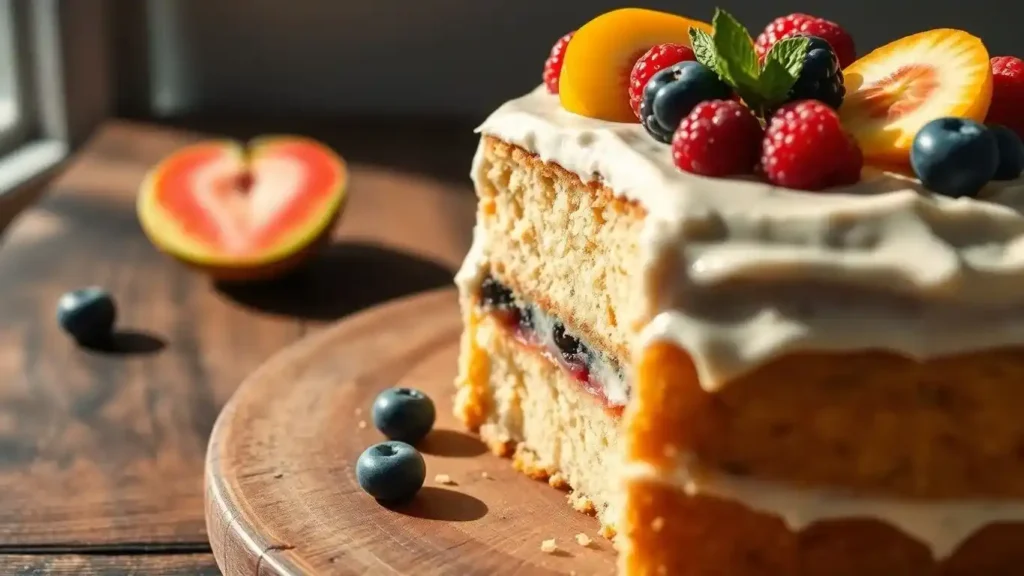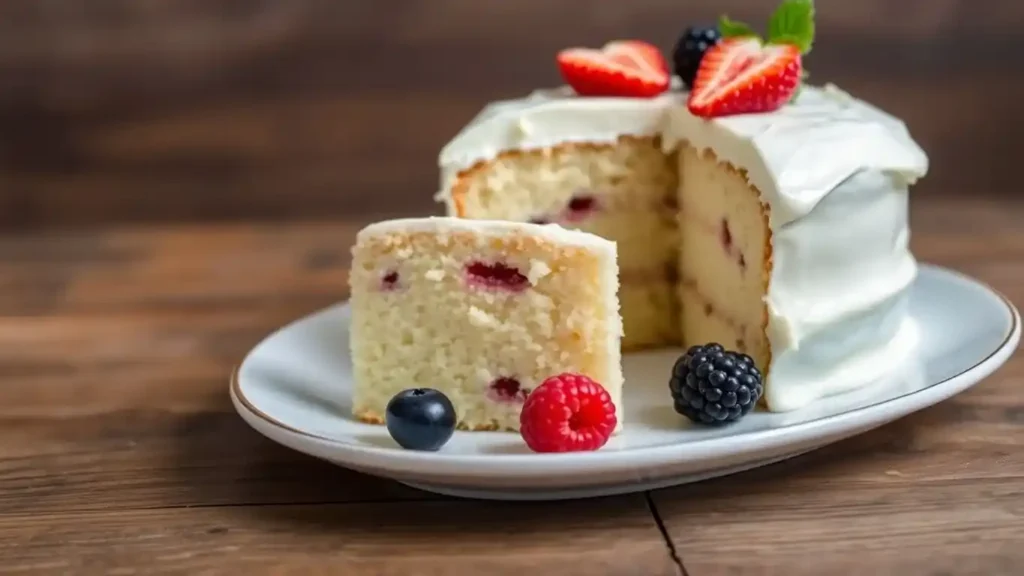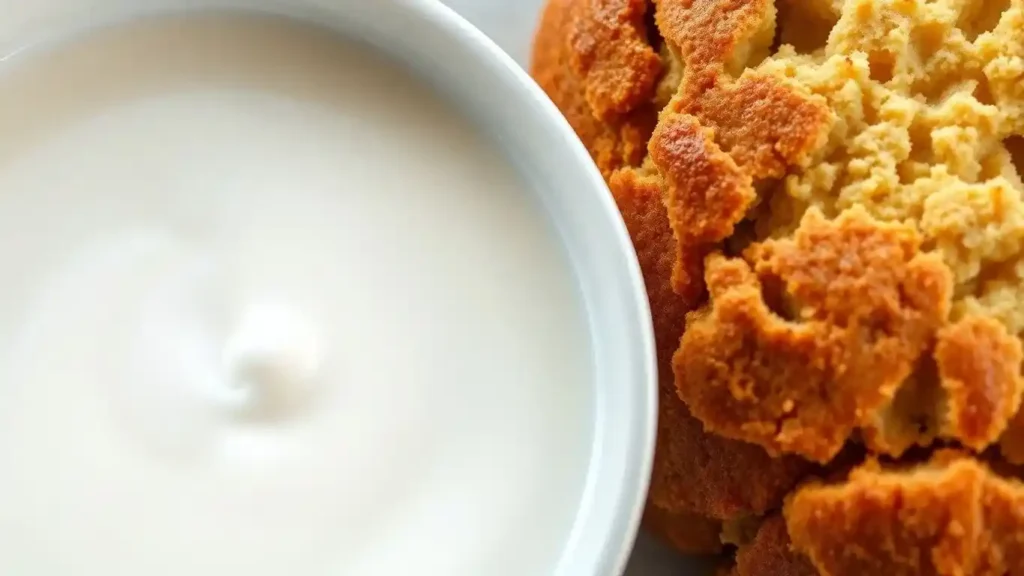Buttermilk is more than just an ingredient it’s a baking essential that plays a crucial role in creating soft, tender, and flavorful baked goods. From classic pancakes to moist cakes and fluffy biscuits, buttermilk’s acidity helps activate leavening agents, ensuring a light and airy texture. But what if you don’t have buttermilk on hand? Can you use kefir instead?
Kefir, a fermented milk drink packed with probiotics, is often suggested as a substitute for buttermilk. But does it truly deliver the same results? Understanding the science behind buttermilk and how kefir compares can help you make an informed choice when baking. This article explores the function of buttermilk in baking, how it affects texture and rise, and whether kefir can be a viable replacement.
By the end, you’ll not only understand the role of buttermilk but also gain practical tips on using kefir and other substitutes to perfect your recipes. Let’s dive in and uncover the science behind these tangy dairy ingredients!
Table of contents
Understanding the Role of Buttermilk in Baking
The Science Behind Buttermilk’s Acidity
can you use kefir instead of buttermilk in cake? let’s discover that with science. Buttermilk, especially the cultured kind you find in stores today, is a fermented milk product often substituted with kefir instead of buttermilk in cake recipes. It’s not just about taste; the acidity of buttermilk plays a big role in baking. This acidity reacts with alkaline baking soda, creating carbon dioxide bubbles that help your cake rise. Think of it like a grown-up version of those baking soda volcanoes from science class. This reaction is crucial for fluffy pancakes and quick bread, giving them that perfect lift.
How Buttermilk Affects Cake Texture
When you use buttermilk in recipes, you’re adding a unique texture to your baked goods. Thanks to its thick consistency, buttermilk helps maintain moisture without making the batter too runny. If you are considering using kefir instead of buttermilk in cake recipes, you can achieve similar results. This is why it’s a popular ingredient for baking pancakes and cakes, ensuring they come out soft and tender. If you’re in a pinch, keeping a can of buttermilk powder in your pantry can be a lifesaver, providing the same benefits without the need for refrigeration.
Why Buttermilk is a Popular Choice
Buttermilk’s popularity in baking isn’t just about its acidity. Its tangy flavor enhances the taste of cakes and other baked goods, while also balancing the sweetness. It’s a key ingredient for baking that adds depth to your recipes. And let’s not forget its historical roots—traditional buttermilk was a by-product of turning cream into butter, making it a staple in kitchens for generations. Today, it’s still loved for its ability to create light, flavorful, and perfectly risen cakes, biscuits, and more.
Buttermilk isn’t just a simple ingredient; it’s a powerhouse in the baking world, bringing flavor, texture, and rise to your favorite recipes.
Exploring Kefir as a Substitute for Buttermilk

What is Kefir and How is it Made?
Kefir is a type of fermented milk drink, originally hailing from the Caucasus region, and it works well when you use kefir instead of buttermilk in cake recipes. It’s made by adding kefir grains, which are a mix of bacteria and yeast, to milk. This fermentation of milk gives kefir its unique tangy taste, similar to a thin, liquid yogurt. The process results in a drink that’s not only rich in probiotics but also has a slightly sour flavor that can add depth to your baked goods.
Comparing the Nutritional Profiles of Kefir and Buttermilk
When you stack up kefir against buttermilk, you’ll find both have similar nutritional profiles. Both are low in fat and high in calcium, but kefir edges out with its probiotic content. These probiotics are beneficial for gut health, making kefir a healthier choice for some. Here’s a quick comparison:
| Nutrient | Kefir | Buttermilk |
|---|---|---|
| Calories | 110 per cup | 99 per cup |
| Fat | 2g | 2.2g |
| Calcium | 30% DV | 28% DV |
| Probiotics | High | Moderate |
To dive deeper into the comparison, read Buttermilk or Kefir? for a detailed breakdown of their properties.
The Fermentation Process: Kefir vs. Buttermilk
Both kefir and buttermilk are products of fermented milk, but their fermentation processes differ slightly. Kefir involves a symbiotic culture of bacteria and yeast, while buttermilk is usually fermented using only lactic acid bacteria. This difference gives kefir a more complex flavor profile and a thicker consistency, which can be an advantage or a challenge in baking, depending on your recipe. Whether you’re using plain kefir or experimenting with other fermented milk options like cashew milk or coconut milk, understanding these nuances can help you achieve the desired results in your cakes.
Kefir’s unique tang and versatility in baking make it an excellent choice. Learn more about kefir in baking and its wide-ranging uses.
Benefits of Using Kefir Instead of Buttermilk in Cake

Achieving the Desired Cake Texture with Kefir
Kefir’s acidity plays a big role in baking, just like buttermilk, making it a perfect choice when opting for kefir instead of buttermilk in cake. This acidity helps activate the baking soda or baking powder, giving cakes a nice rise and fluffy texture. Kefir’s thicker consistency can contribute to a denser cake, but many find it adds a pleasant, moist crumb. If your cake recipe calls for buttermilk, swapping it with kefir might just give you the texture you’re aiming for.
Flavor Enhancements with Kefir
Kefir brings a unique tangy flavor to cakes, similar to buttermilk but with its own twist. This tang can enhance the overall taste, making it more complex and interesting. Some people even prefer kefir’s flavor over buttermilk because it can add a subtle depth to the cake that buttermilk might not.
Kefir’s Impact on Cake Moisture
One of the key benefits of using kefir is its ability to keep cakes moist. Thanks to its thicker texture, kefir helps retain moisture within the cake, preventing it from drying out quickly. This is particularly beneficial for cakes that are stored for a few days, as they tend to stay fresh and soft longer.
When replacing buttermilk with kefir in your cakes, you’re not just making a simple substitution. You’re embracing a whole new way to enjoy your baked goods, with added moisture and a delightful tang that makes each bite memorable.
Consider trying kefir in your next baking adventure; it might just become your new favorite ingredient!
Practical Tips for Substituting Kefir for Buttermilk
Adjusting Measurements for Perfect Results
When swapping kefir instead of buttermilk in cake recipes, it’s usually a one-to-one replacement. However, keep an eye on consistency. If your kefir is on the thicker side, try thinning it out with a splash of milk or water. This will help maintain the desired texture of your cake.
Combining Kefir with Other Ingredients
Mixing kefir with other elements in your recipe requires a bit of finesse. If your batter seems too thick, adding a tablespoon of lemon juice can help loosen things up and add a hint of citrusy flavor. This trick not only adjusts the texture but also enhances the overall taste.
Common Mistakes to Avoid
- Not adjusting for thickness: Kefir can be thicker than buttermilk, so remember to thin it as needed.
- Ignoring flavor changes: Kefir has a stronger tang than buttermilk, which could alter the cake’s taste.
- Overmixing the batter: This can lead to a denser cake, so mix just until combined.
Substituting kefir for buttermilk in cakes is a breeze if you keep these tips in mind. The key is to adjust the consistency and be mindful of the taste changes it might bring.
Experimenting with Kefir in Different Cake Recipes
Kefir in Chocolate Cake: A Flavorful Twist
Using kefir instead of buttermilk in cake recipes, like chocolate cake, can be a game-changer. It adds a depth of flavor that enhances the rich chocolate notes. The natural acidity of kefir reacts with the soda in recipes, giving the cake a tender crumb and moist texture. Try replacing buttermilk with kefir in your favorite chocolate cake recipe and experience the difference.
Using Kefir in Vanilla Cake for a Tangy Note
Vanilla cake with kefir not only introduces a subtle tang that complements the vanilla’s sweetness, but it also enhances the overall flavor profile. Moreover, the fermentation process in kefir works wonders in the cake batter, ensuring a soft, airy texture that melts in your mouth. If you’re looking to add a rich flavor without overpowering the delicate vanilla notes, kefir is undoubtedly your go-to substitute. Additionally, using kefir provides a unique twist that elevates the classic vanilla cake, making it an even more delightful treat.
Trying Kefir in Fruit-Based Cakes
Kefir shines in fruit-based cakes, like those with berries or citrus. Its tanginess pairs well with the natural sweetness of fruits, and its consistency keeps the cake moist. When making a fruit cake, consider using kefir for a delightful twist that enhances the overall flavor profile.
Experimenting with kefir instead of buttermilk in cakes isn’t just a substitute; it’s an opportunity to explore new flavors and textures. Whether you’re baking a chocolate indulgence or a fruity delight, kefir can elevate your baking game, making each bite a unique experience.
For a practical example of kefir in cakes, try a kefir sheet cake recipe that ensures moist and tender results.
Addressing Common Concerns When Using Kefir

Will Kefir Change the Cake’s Flavor Profile?
Kefir brings a unique acidic flavor to cakes, thanks to its lactic acid bacteria. This tangy taste can be a delightful twist, but it’s essential to consider the balance of bacteria in your recipe. While kefir’s acidic flavor level is similar to buttermilk, it might slightly alter the overall taste, making it a bit more tangy. If you’re aiming for a subtle flavor, test a small batch first.
How to Handle Kefir’s Consistency
Kefir’s texture is thicker than buttermilk, which can affect your cake’s batter. Here’s how to manage it:
- Adjust Liquid Ingredients: If your batter seems too thick, add a splash of milk or water.
- Mix Thoroughly: Ensure the kefir is well-mixed with other ingredients to avoid lumps.
- Consider Fat Content: Kefir’s fat content is similar to buttermilk, so no need to adjust fat levels unless you’re using a low-fat version.
Ensuring Proper Cake Rise with Kefir
Kefir’s fermentation process involves beneficial bacteria and acetic acid bacteria, which help in cake rising. To ensure your cake rises well:
- Check Freshness: Use fresh kefir for the best reaction with baking soda or powder.
- Monitor Acidity: The acidic environment kefir creates is crucial for proper leavening, so avoid adding too much extra acid.
- Bake Promptly: Once mixed, bake your batter quickly to capture the gas produced by the bacteria.
Using kefir instead of buttermilk can enhance your cake with a tangy twist while maintaining moisture and rise. Just keep an eye on the consistency and acidity for the best results.
Exploring Other Buttermilk Substitutes
Yogurt as an Alternative to Buttermilk
Yogurt is a fantastic substitute for buttermilk, especially in recipes that call for a cup of buttermilk. It brings a similar tangy flavor and acidity. To use yogurt, simply swap it in a 1-to-1 ratio with buttermilk. If the yogurt seems too thick, you can thin it out with a bit of regular milk or water. This adjustment helps maintain the right consistency, especially in batters for fluffy pancakes.
Sour Cream: A Rich Substitute
Sour cream offers not just the tangy flavors needed for baking but also adds a creamy texture. When using sour cream, you might notice a richer taste in your baked goods. However, be mindful of the fat content as it can alter the texture. It’s best to mix sour cream with a little bit of low-fat milk to mimic the consistency of modern buttermilk.
Using Vinegar and Milk as a Quick Fix
If you’re in a pinch, you can make a quick buttermilk substitute by adding an acid ingredient like white vinegar or lemon juice to a cup of milk. Mix one tablespoon of vinegar or lemon juice with a cup of milk and let it sit for about 5 minutes. This mixture won’t be as thick as buttermilk but will still react with dry ingredients like baking soda to create a good rise in your cakes or American-style pancakes.
Tip: Always adjust the list of ingredients when substituting to ensure the balance of acidic ingredients with the rest of your components. This will help maintain the desired texture and flavor profile in your recipes.
Conclusion
So, can you use kefir instead of buttermilk in cake recipes? Absolutely! Kefir’s tangy flavor and similar consistency make it a fantastic stand-in for buttermilk. It not only helps your cake rise beautifully but also keeps it moist and flavorful. Plus, if you have any leftover kefir, it’s great in smoothies or even on its own. So next time you’re out of buttermilk, don’t hesitate to reach for kefir. Your cake—and taste buds—will thank you!
Frequently Asked Questions
Can I use kefir instead of buttermilk in cake recipes?
Yes, you can use kefir instead of buttermilk in cake recipes. They both have similar acidity and consistency, which helps in achieving a light and fluffy texture in cakes.
How do I substitute kefir for buttermilk in a recipe?
You can substitute kefir for buttermilk by using the same amount called for in the recipe. If the kefir is too thick, you may add a little water or milk to thin it out.
Will using kefir change the flavor of my cake?
Kefir might add a slight tangy flavor to your cake, but it generally blends well with other ingredients, enhancing the overall taste.
Is kefir a healthier option than buttermilk?
Kefir and buttermilk have similar nutritional profiles, but kefir often contains more probiotics, which are good for digestion.
What should I do if I don’t have kefir or buttermilk?
If you don’t have kefir or buttermilk, you can mix 1 tablespoon of lemon juice or vinegar with 1 cup of milk as a quick substitute.
Can I use flavored kefir in baking?
It’s best to use plain, unsweetened kefir for baking to avoid altering the flavor and sweetness of your cake.
